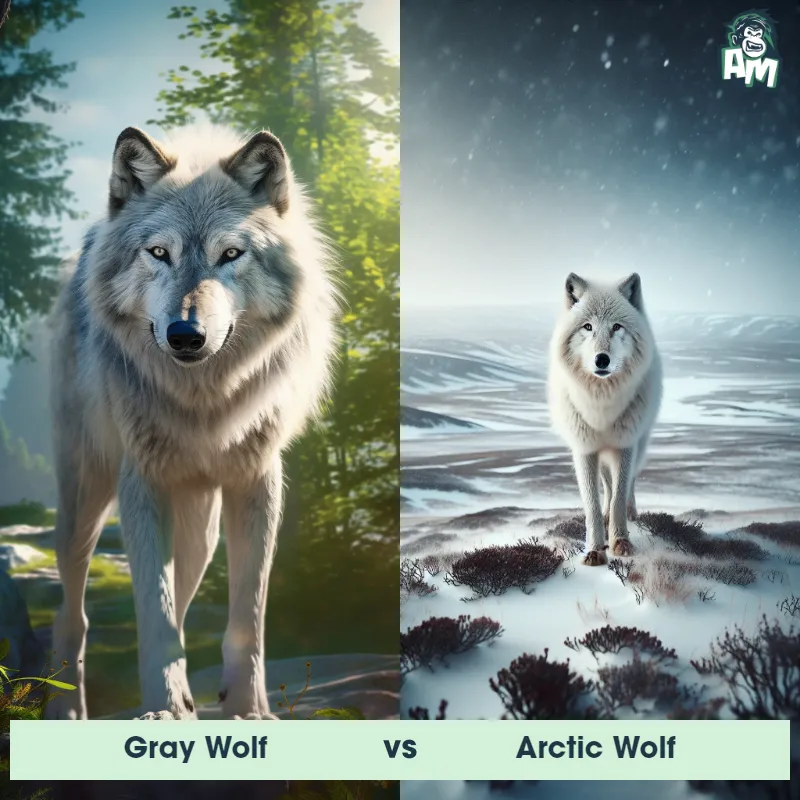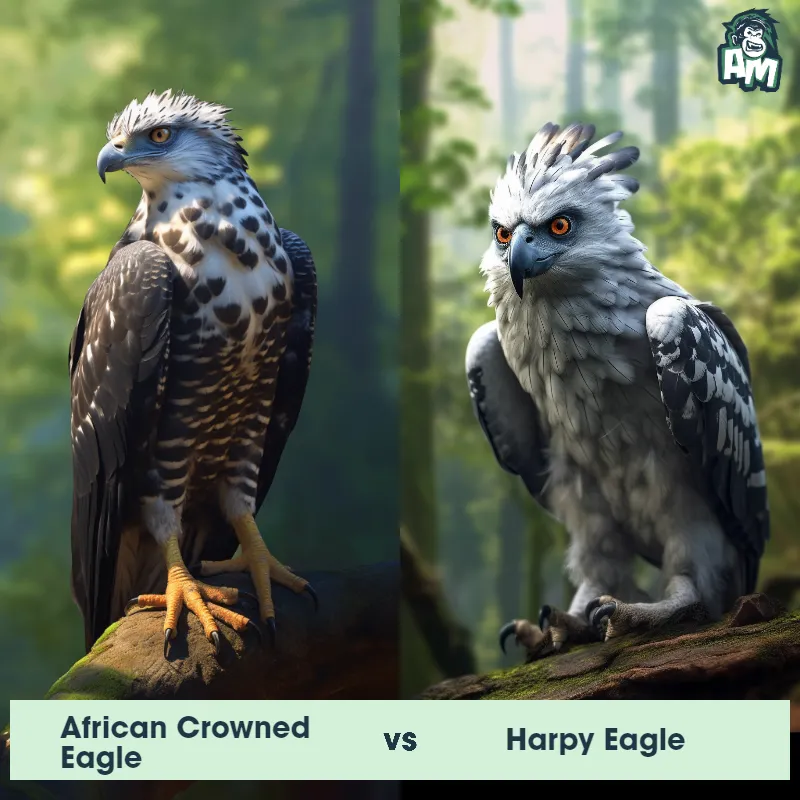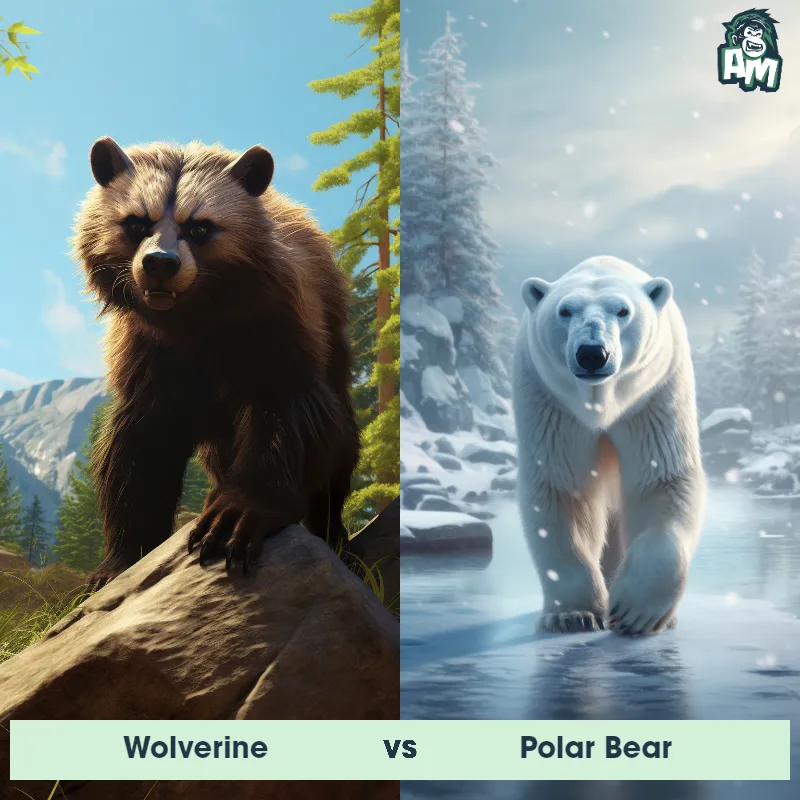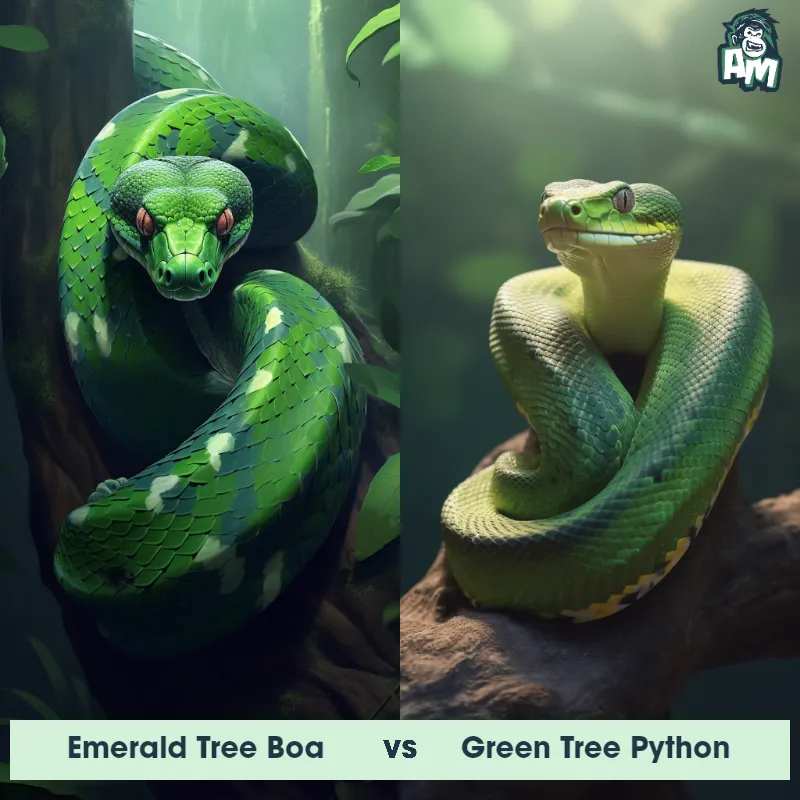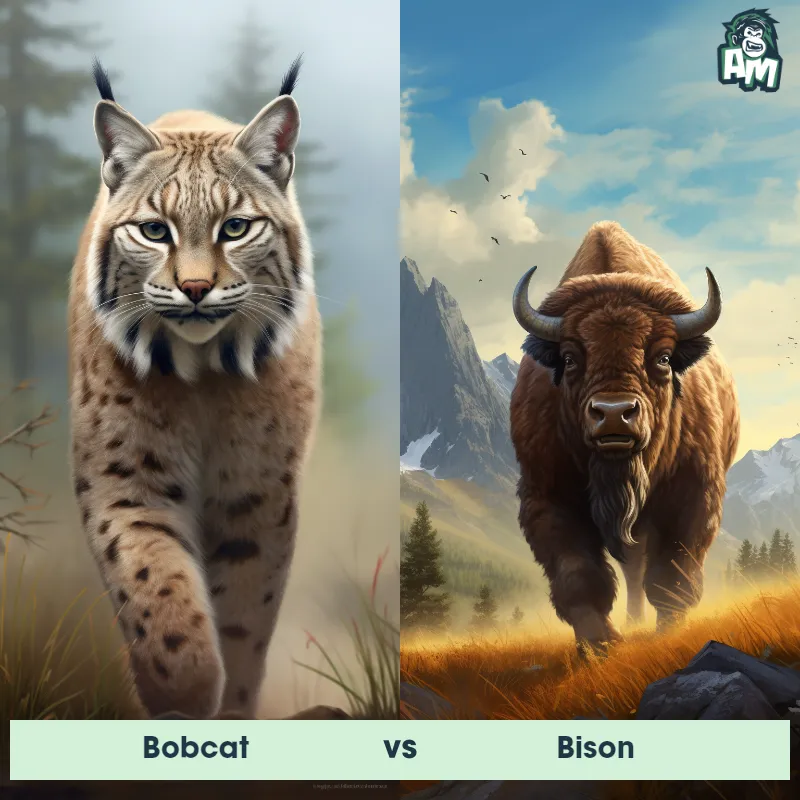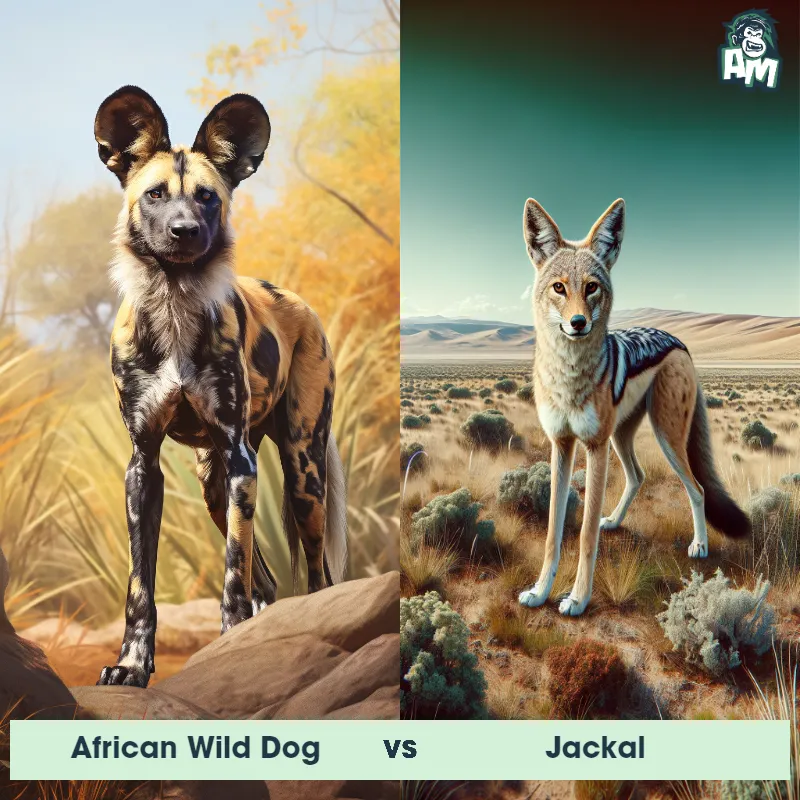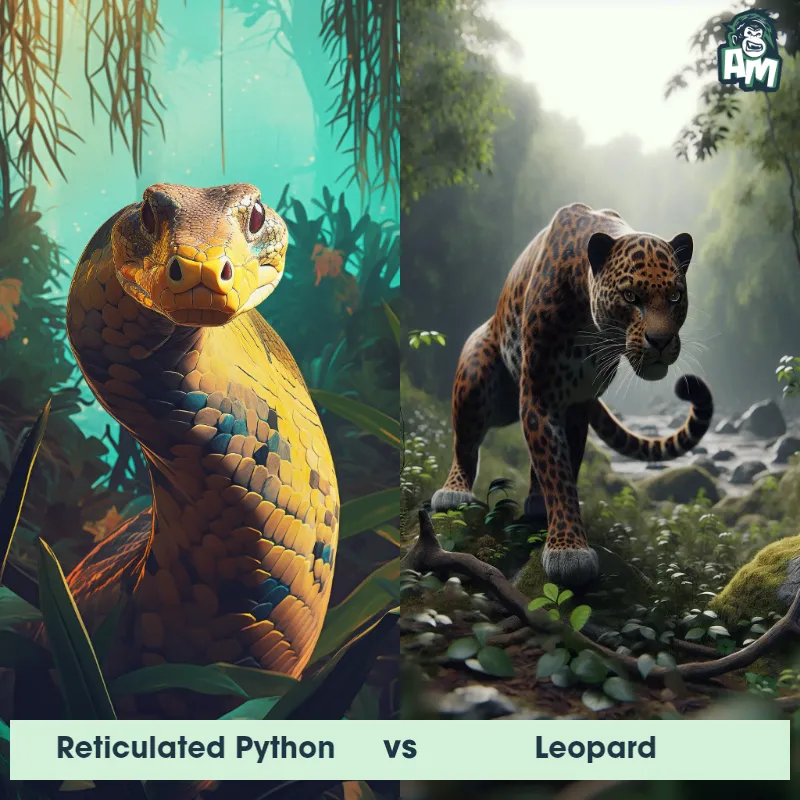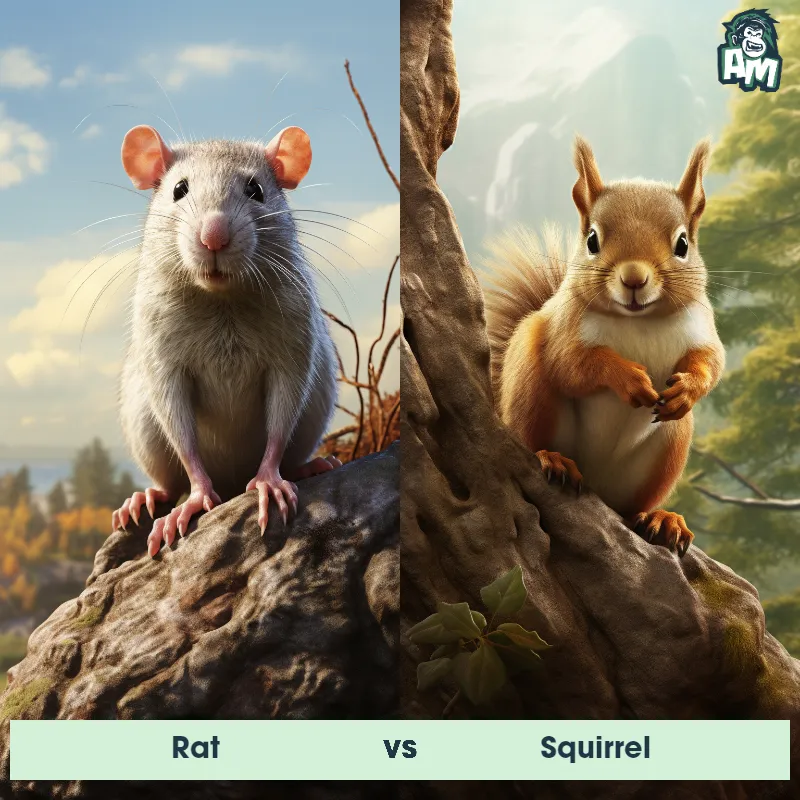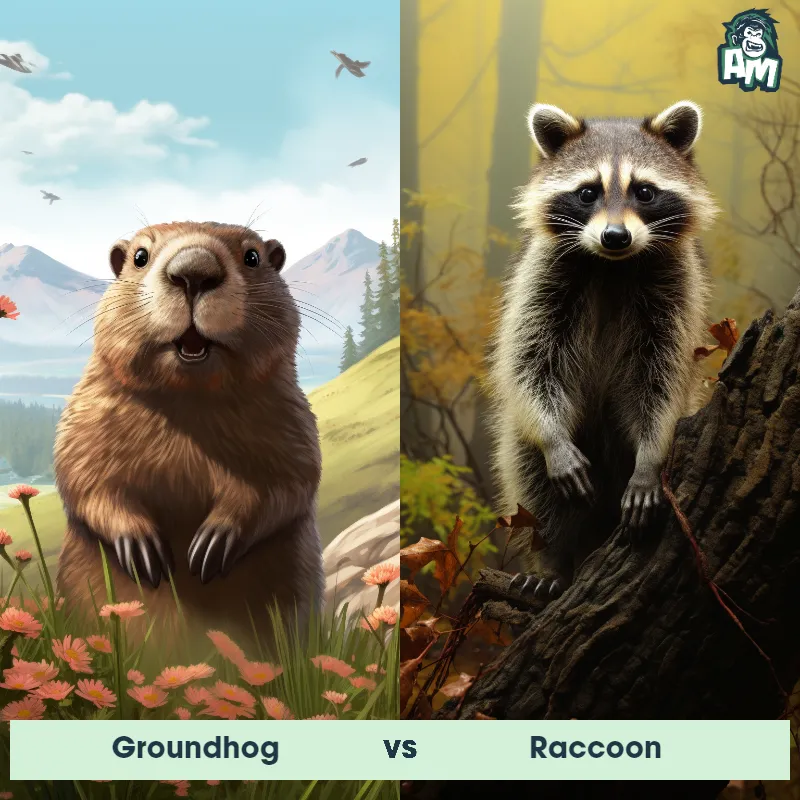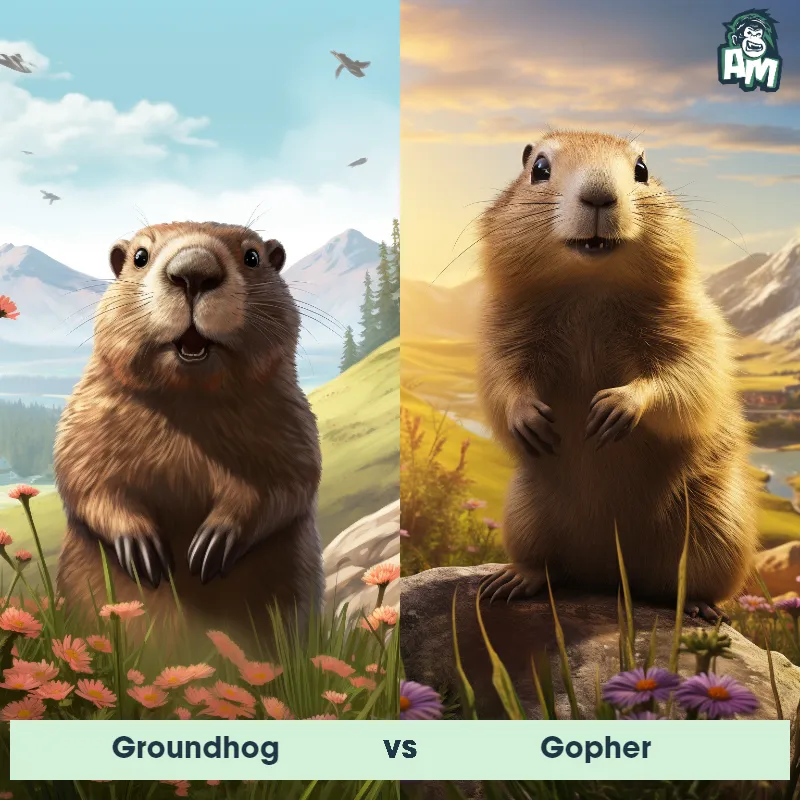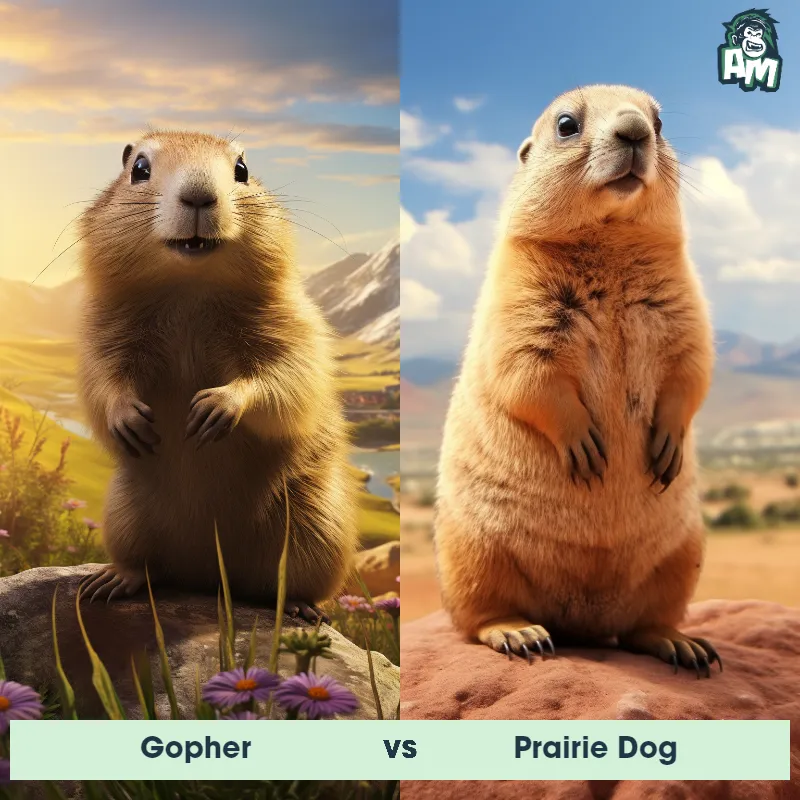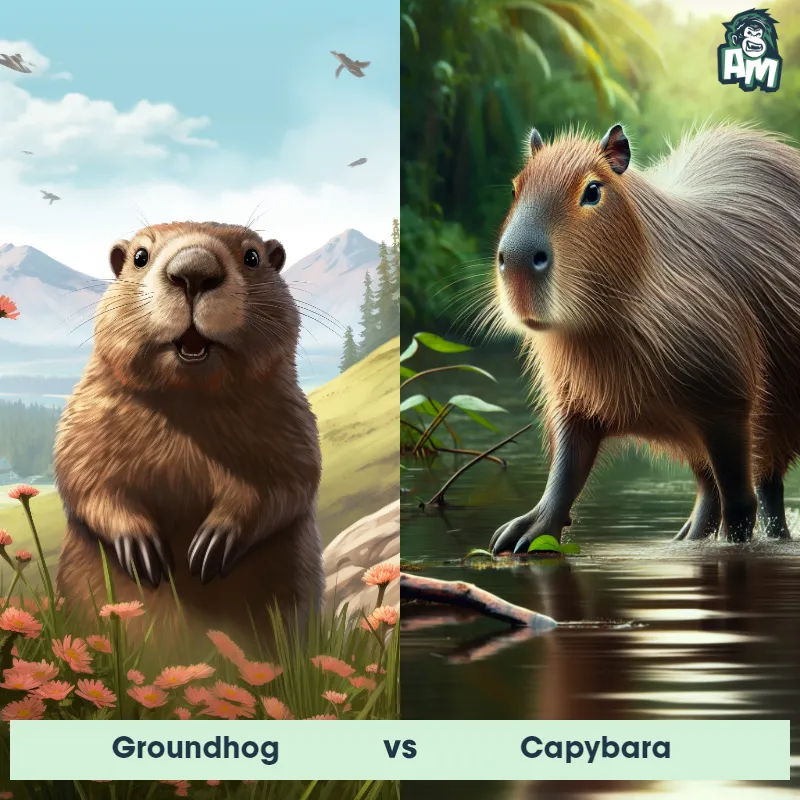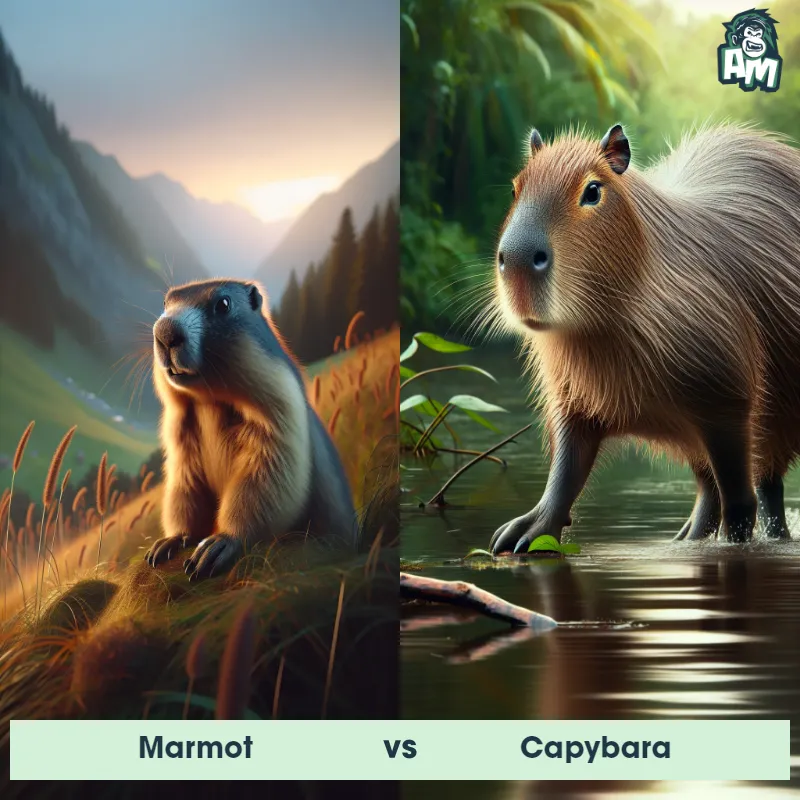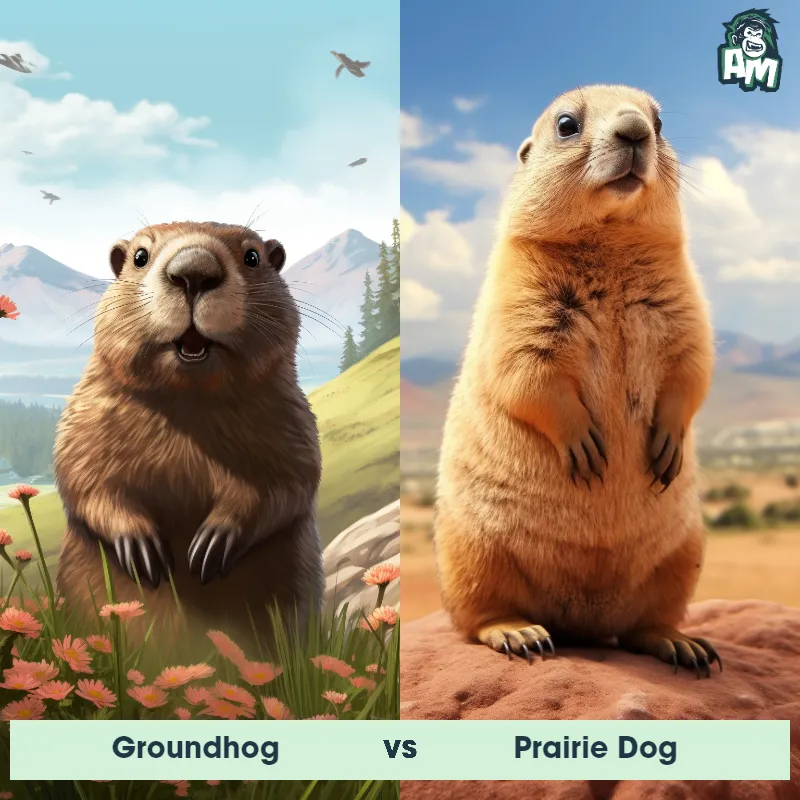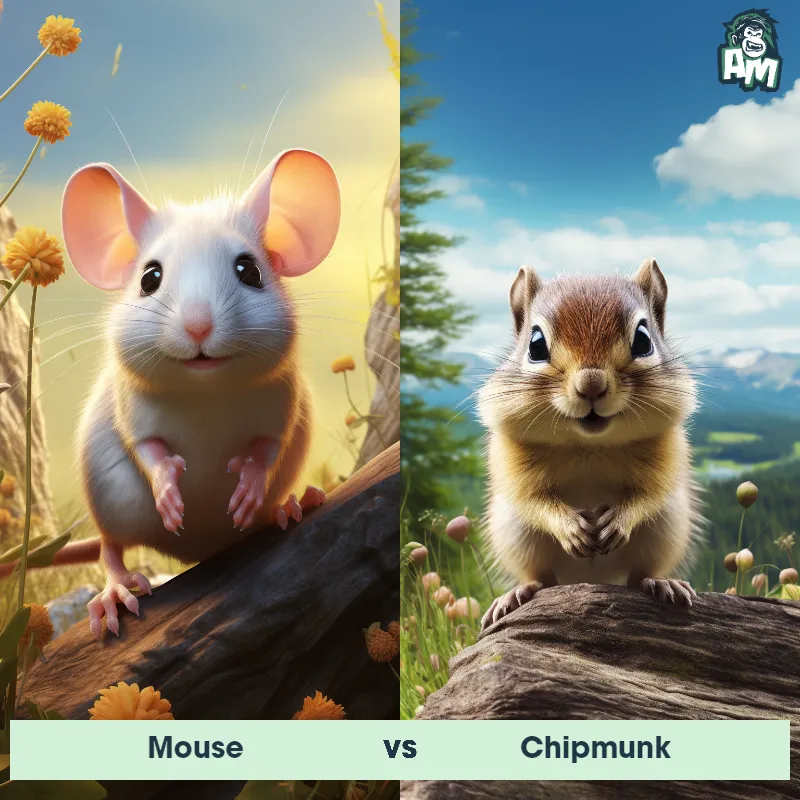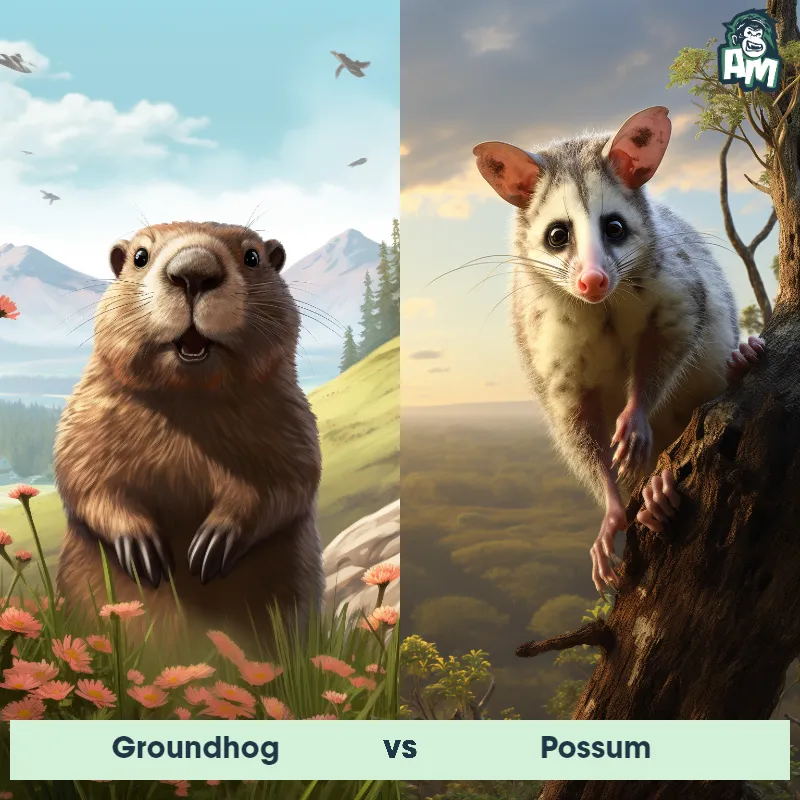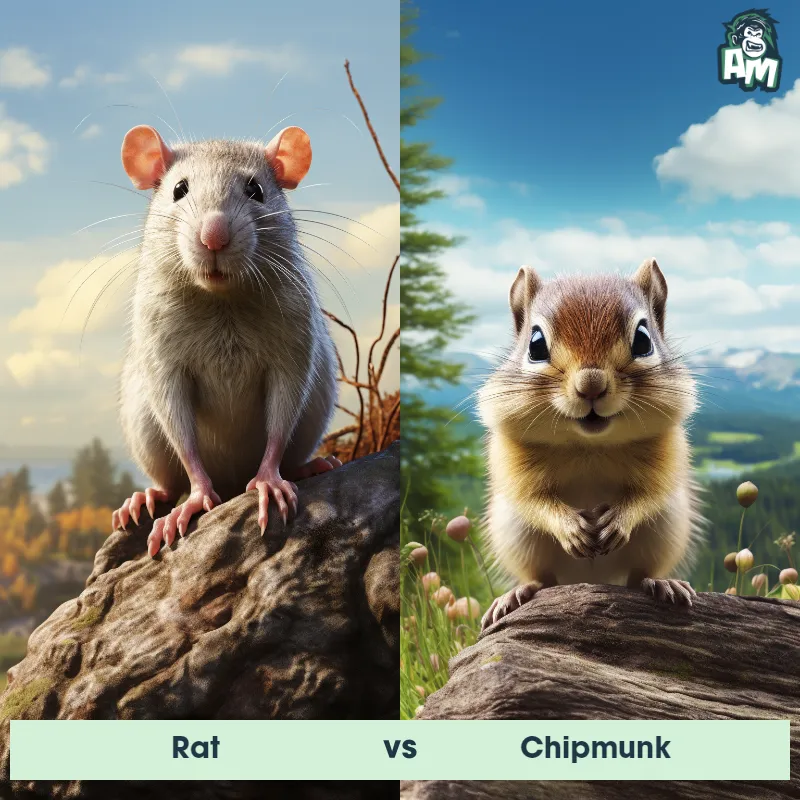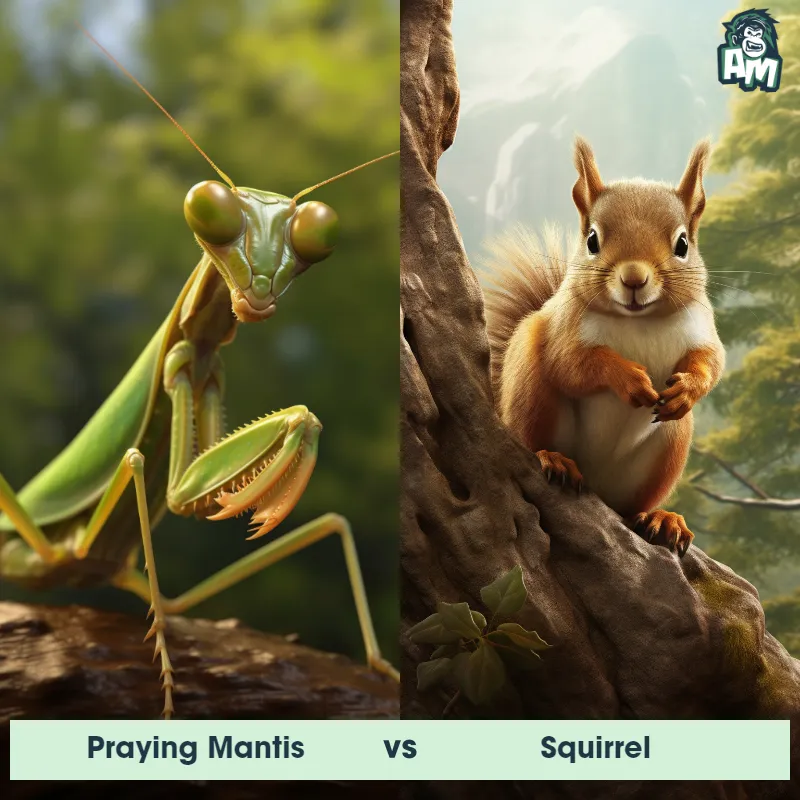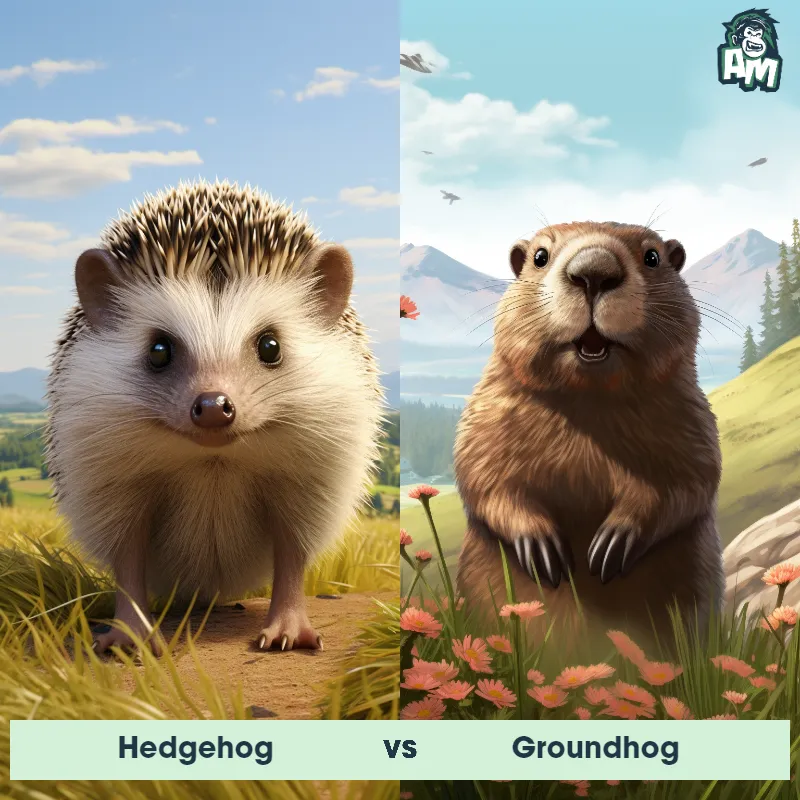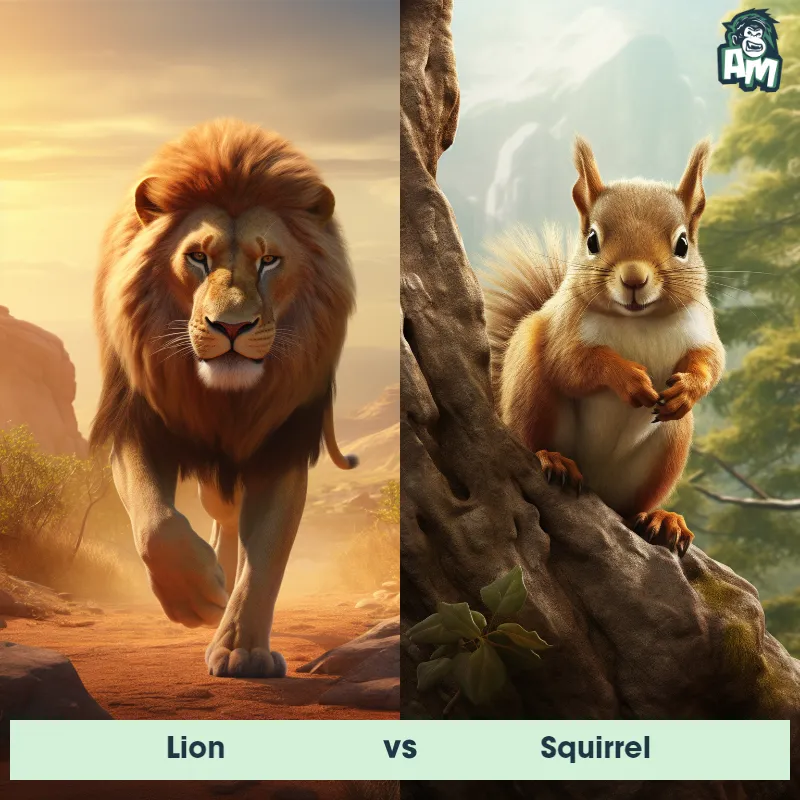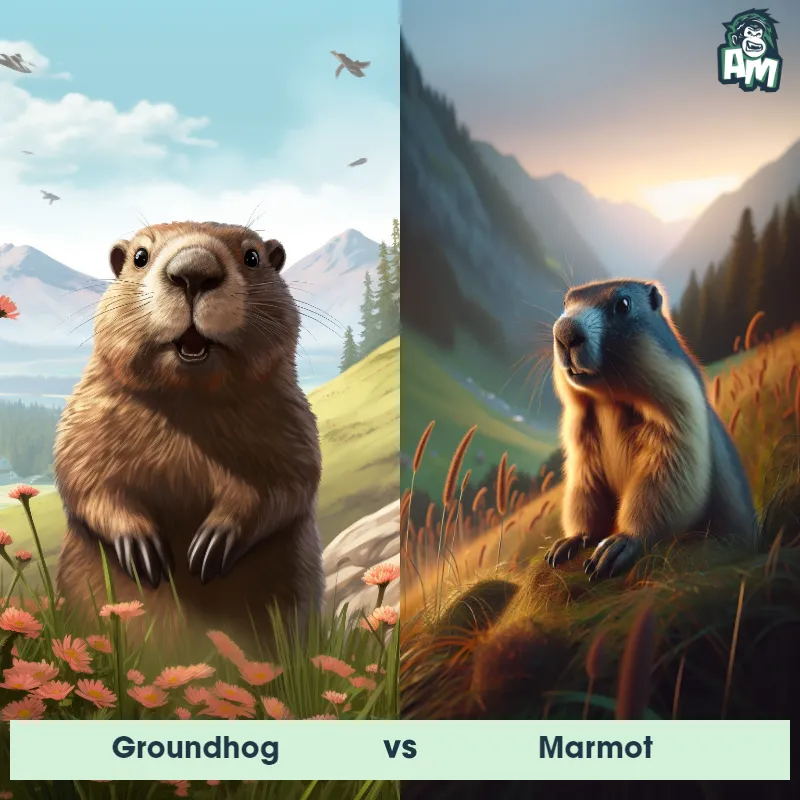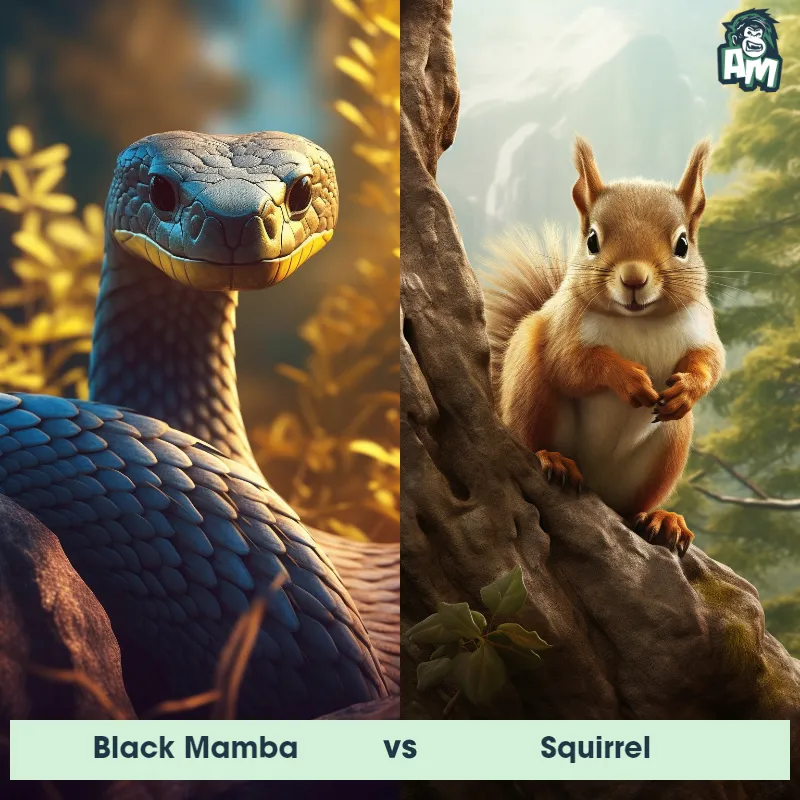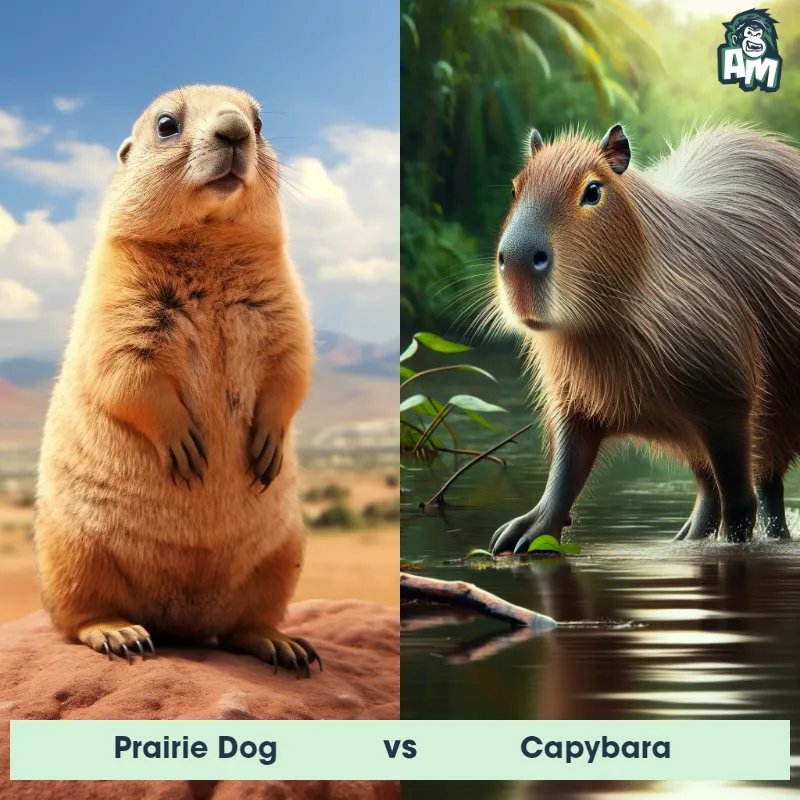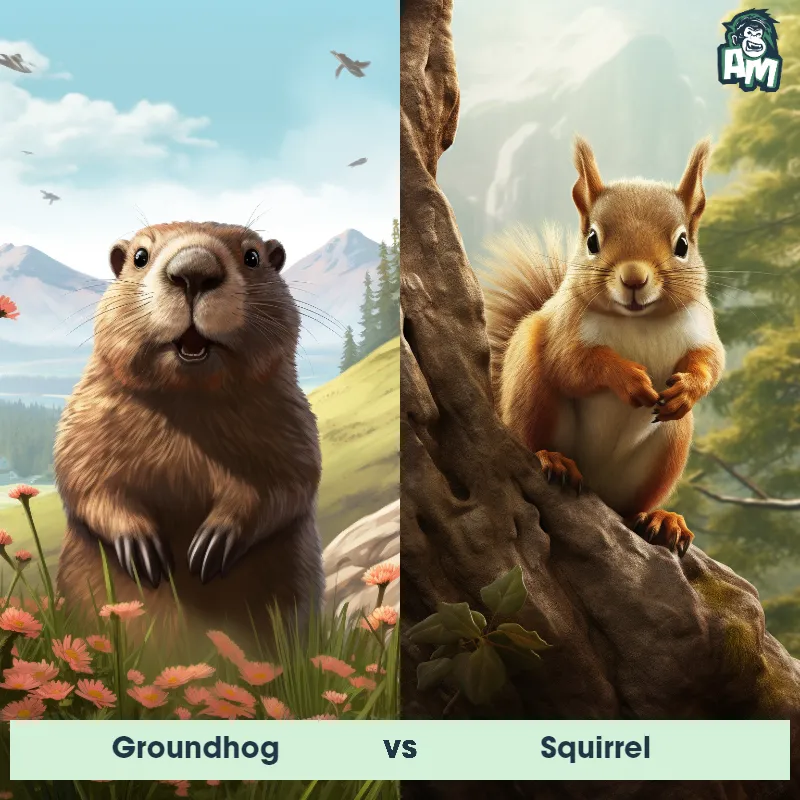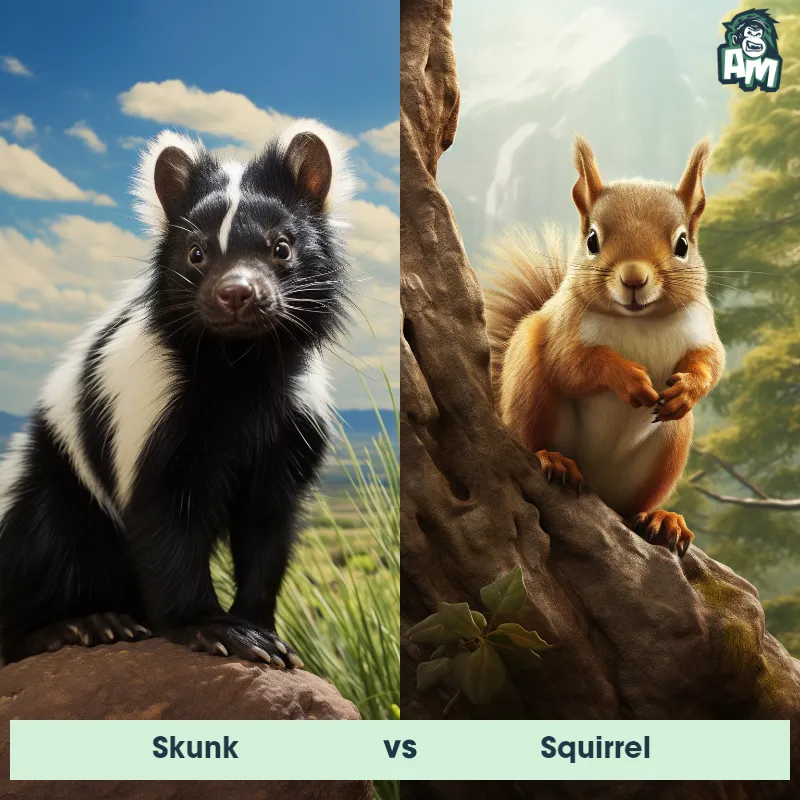Squirrel vs ChipmunkSee Who Wins

Ladies and Gentlemen, welcome to this exciting and suspenseful face-off! Today's standoff is between two of nature's quick and nimble creatures, the Squirrel and the Chipmunk. Hold on to your seats as we tune in for this highly anticipated, fast-paced skirmish.
Contender 1: Squirrel
The Squirrel is a small to medium-sized rodent, known for its bushy tail and agile climbing abilities. They have a slender body covered in soft, silky fur and vary significantly in color, from red and brown to grey and black, depending on the species. Squirrels are arboreal creatures, meaning they spend a significant amount of time in trees, where they forage for nuts and seeds, their primary diet.
Fun Fact: Interestingly, squirrels plant thousands of new trees each year simply by forgetting where they buried their acorns and nuts, playing a crucial role in forest regeneration.
Contender 2: Chipmunk
Chipmunks are small, striped rodents known for their adorable appearance and cheek pouches used for storing food. Part of the squirrel family, they possess brown fur with dark and light stripes running down their backs and sides. They are very agile and fast, able to climb trees and walls with ease. Chipmunks are primarily ground dwellers and live in burrows, which are complex networks of tunnels and chambers.
Fun Fact: During the fall, chipmunks begin to gather food in their cheek pouches and bring it back to their burrows, creating a food cache that can help them survive through winter when they enter a state of torpor, similar to hibernation.
Matchup Stats
| Squirrel | Chipmunk | |
|---|---|---|
| Size | 5-20 inches (13-51 cm) | 4-7 inches (10-18 cm) |
| Weight | 0.5-1.5 lbs (0.2-0.7 kg) | 1-5 ounces (28-142 grams) |
| Speed | 12 mph (19 km/h) | 21mph (34km/h) |
| Key Strength | Agility and Speed | Agility and Speed |
| Biggest Weakness | Small Size and Lack of Defensive Weapons | Small Size |
Current Votes
Squirrel vs Chipmunk
See Who Wins
Matchup Videos
All of our videos contain verified footage of natural encounters between the Squirrel and the Chipmunk. These are true sightings and observations filmed by tourists, scientists, and wildlife documentarians.View More Matches
Looking For More?
Similar Matches
Scientific Stats
| Squirrel | Chipmunk | |
|---|---|---|
| Scientific Name | Sciuridae | Tamias |
| Family | Rodentia | Sciuridae |
| Habitat | Forests, Woodlands, Urban and Suburban Areas | Forests, Woodlands, Gardens, Parks |
| Geography | Worldwide except Antarctica | North America, Asia |
| Diet | Nuts, Seeds, Fruits, Insects, and Occasionally Bird Eggs | Omnivorous (Nuts, Seeds, Fruits, Insects, Bird Eggs) |
| Lifespan | 5 years - 12 years | 2 years - 8 years |
Key Differences between Squirrel and Chipmunk
- Coloration: Squirrels commonly have a more uniform coloration, with shades of brown, gray, or black, while chipmunks have distinct stripes along their body, typically a combination of brown, black, and white.
- Facial markings: Chipmunks have characteristic facial stripes, including a prominent black stripe that extends from their eye to their mouth, while squirrels generally lack these distinct facial markings.
- Ears: Squirrels typically have larger and more prominent ears compared to chipmunks, whose ears are relatively smaller and less noticeable.
- Size: Squirrels are generally larger than chipmunks, with adult squirrels measuring around 12 to 20 inches in length, including their tail, while chipmunks are typically smaller, ranging from 5 to 6 inches in length.
- Body shape: Squirrels have a more robust and elongated body shape, while chipmunks have a smaller, compact body structure.
- Tail: Squirrels have a bushy tail that is often held over their back, while chipmunks have a relatively thinner tail that is not as bushy and is usually held straight out behind them.



